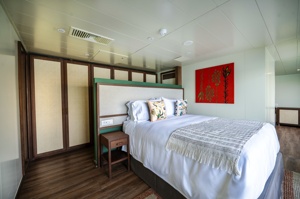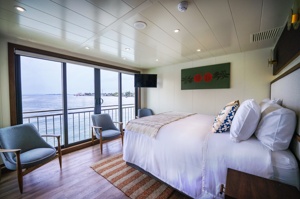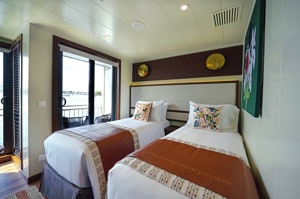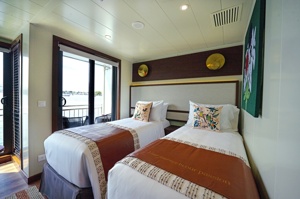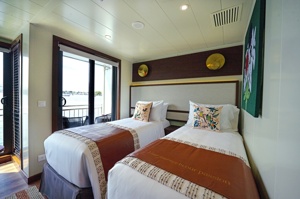Step aboard a world of unparalleled experiences and be warmly welcomed aboard our stunning newly designed AmaMagdalena, an intimate 60-passenger river cruise ship offering the luxury of space and sweeping views as you cruise Colombia's Magdalena River. This beautiful ship features a rejuvenating heated pool on the Sun Deck, a spacious fitness room, a Main Restaurant serving exquisite, regionally inspired Latin American cuisine and Western favourites, as well as an intimate al fresco specialty dining experience. Plus, you will rest your eyes each night in your amenity-filled twin-balcony stateroom, comprised of both a French balcony and an outside balcony, from which you will wake up to a new view each day in one of Colombia's fascinating destinations.
Cruise ID: 51492
EUROPE
7-Night Cruise - Ship's Crew: The entire amount will be divided equally amongst all crew members. Recommendation: 100 Euros per 7-night cruise, per guest. (AmaMagna 120 Euros per 7-night cruise, per guest)
Cruise Manager: Your Cruise Manager is not part of the ship's crew and is the AmaWaterways representative who also accompanies you on any pre- and/or post-cruise hotel/land extensions you may have booked. Recommendation: 25 Euros per 7-night, per guest; 4 Euros for each additional day, per guest for pre- and post-cruise hotel/land extensions.
10-Night Cruise - Ship's Crew: The entire amount will be divided equally amongst all crew members. Recommendation: 143 Euros per 10-night cruise, per guest.
Cruise Manager: Your Cruise Manager is not part of the ship's crew and is the AmaWaterways representative who also accompanies you on any pre- and/or post-cruise hotel/land extensions you may have booked. Recommendation: 36 Euros per 10-night, per guest; 4 Euros for each additional day, per guest for pre- and post-cruise hotel/land extensions.
11-Night Cruise - Ship's Crew: The entire amount will be divided equally amongst all crew members. Recommendation: 158 Euros per 11-night cruise, per guest.
Cruise Manager: Your Cruise Manager is not part of the ship's crew and is the AmaWaterways representative who also accompanies you on any pre- and/or post-cruise hotel/land extensions you may have booked. Recommendation: 40 Euros per 11-night, per guest; 4 Euros for each additional day, per guest for pre- and post-cruise hotel/land extensions.
14-Night Cruise - Ship's Crew: The entire amount will be divided equally amongst all crew members. Recommendation: 200 Euros per 14-night cruise, per guest.
Cruise Manager: Your Cruise Manager is not part of the ship's crew and is the AmaWaterways representative who also accompanies you on any pre- and/or post-cruise hotel/land extensions you may have booked. Recommendation: 50 Euros per 14-night, per guest; 4 Euros for each additional day, per guest for pre- and post-cruise hotel/land extensions.
PORTUGAL
Ship's Crew: The entire amount will be divided equally amongst all crew members. Recommendation: 100 Euros per week, per guest.
Cruise Manager: Your Cruise Manager is not part of the ship's crew and is the AmaWaterways representative who also accompanies you on any pre- and/or post-cruise hotel/land extensions you may have booked. Recommendation: 30 Euros per week, per guest; 4 Euros for each additional day, per guest for pre- and post-cruise hotel/land extensions.
MEKONG
PRE- AND POST-CRUISE
Cruise Manager: $3 per person per day
Crew: $10 per person per day (To be divided evenly among all crew members)
AFRICA
Zambezi Queen Onboard Staff: To be divided evenly among all crew members US$15-20 per guest per day
AmaWaterways Tour Guide: From Cape Town to Johannesburg US$5-10 per guest per day
Safari Lodge Stay
Safari Ranger/Guide: US$10-20 per person per day
Game Tracker (South Africa only): US$5 person per day
Butler/Waiter at Lodges: US$5 person per day
General Lodge Staff: US$10-20 person per day



